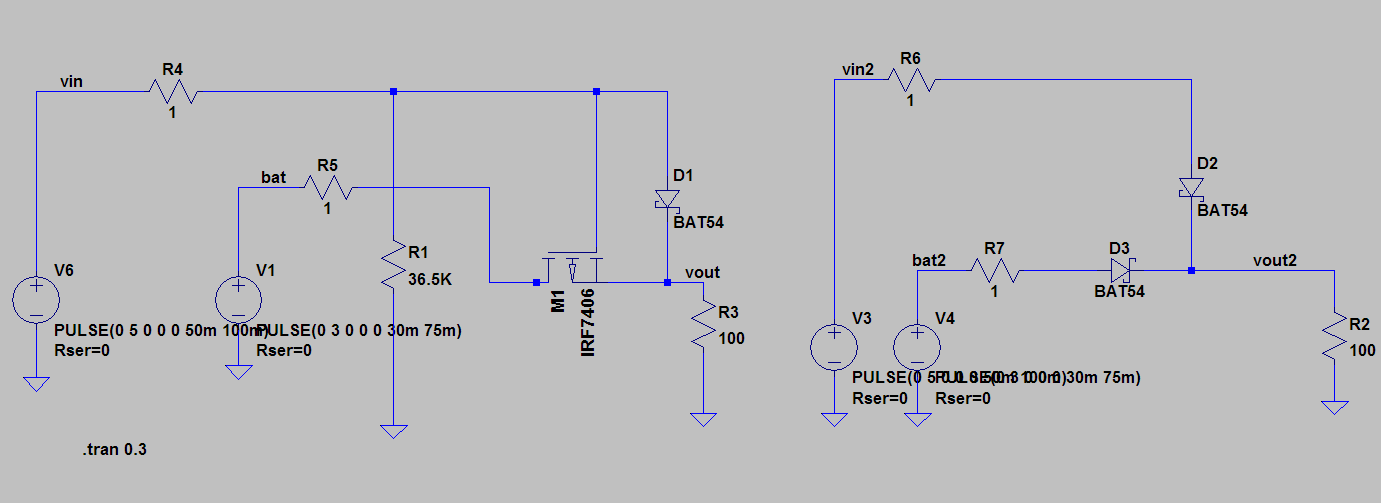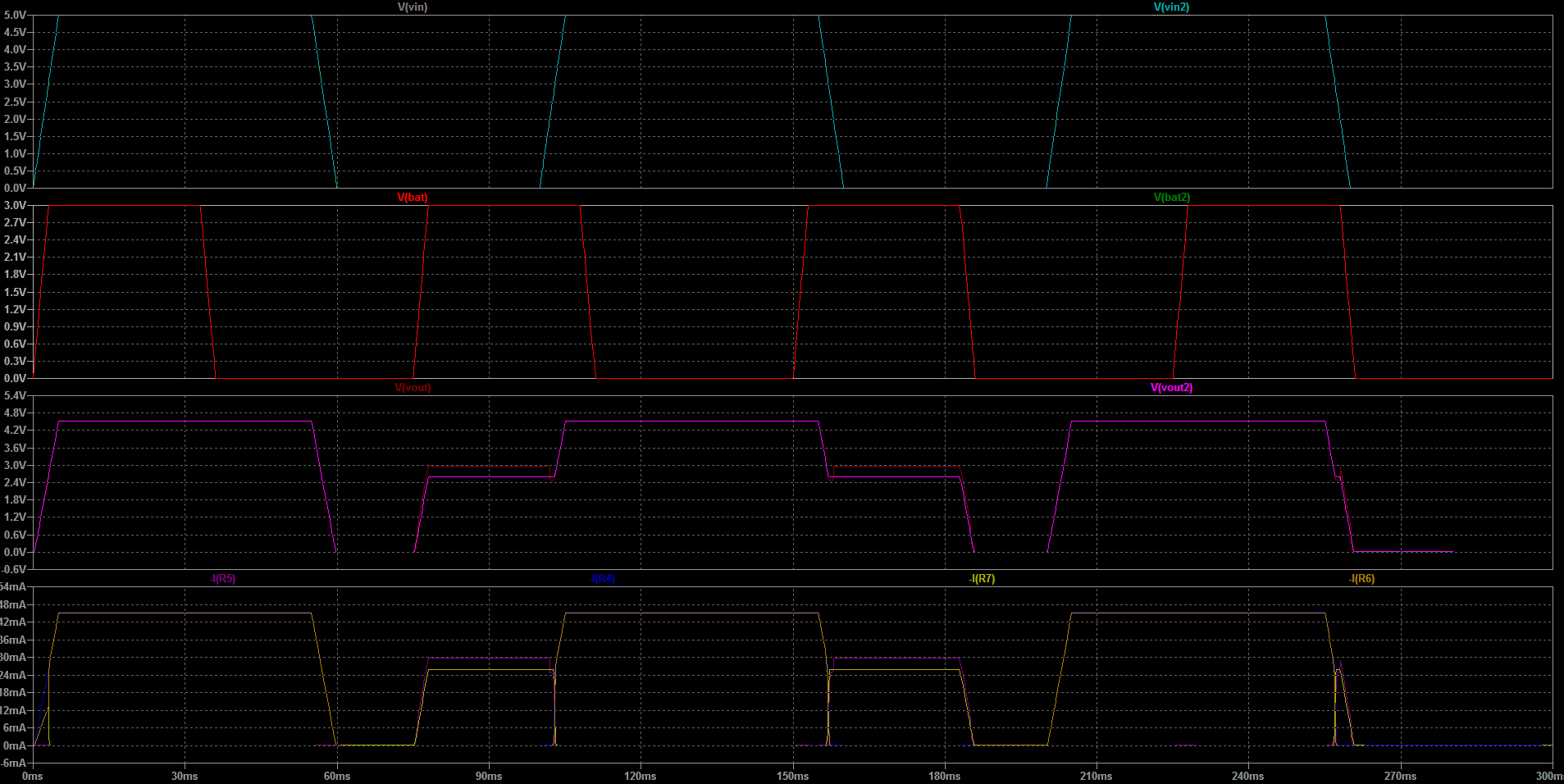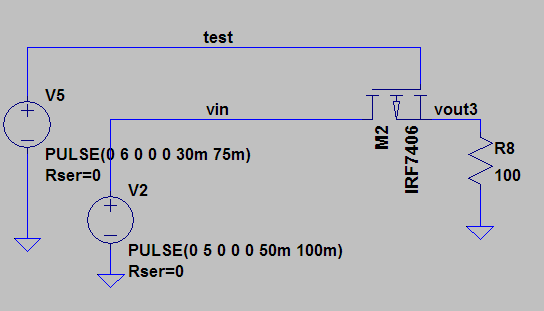I’ve alluded to this in the past, once or twice.
Power management in battery applications is pretty tricky. There are a lot of different situations, and a lot of different strategies. In the past, for the topic of this conversation, single cell Lithium polymer batteries, I’ve used a pair of Schottky diodes to automatically “select” the highest voltage feeding the system. That will be either 5V USB power, or 3V-4.2V LiPo battery.
It was suggested to me to use the body diode of a P-Channel MOSFET, but I dismissed that as unnecessary: the body diodes have no lower voltage drop than a Schottky, around 0.2V. Here is one of the more readily available results for battery/wall-power switchover:
That thread doesn’t make a good case for the FET solution over the diode, but the initial suggestion to me indicated that, once “on”, MOSFETs will conduct current in either direction. This breaks my understanding of how they work, but it warrants more research.
That search on its own is confirmed by:
Stack Exchange posts don’t make for good engineering, though. This calls for a simulation!


Initial results check out! Those output waveforms on V(out) and V(out2) should be identical, if the current through M1 was purely through the body diode.
Simplifying this even more, we can do this:

That results in the following waveforms. You can clearly see the shoulder in V(out3) (blue), where the MOSFET transitions from conducting through the body diode, to conducting through the transistor junction itself:

That’s pretty conclusive. It’s weird to find gaps in my understanding of basic electronic building blocks at this point, but I’m always on-board with more education.
So now this is a documented solution at handling the power switching circuitry between USB and lithium batteries.
In the future, I should put together a written record of the strategies for charging the LiPo batteries in the circuit, and also low-voltage cut-offs to avoid over-discharging and permanently damaging the batteries.
